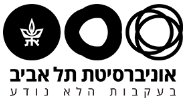סמינר מחלקתי: Using Smartphone Sensors to Monitor Natural Disasters
הסמינר השבועי של בית הספר ללימודי הסביבה ע"ש פורטר
יום שני, 5 במרץ 2018, שעה 15:00-16:00
בניין הקפסולה, אודיטוריום (קומה 1-)
Using Smartphone Sensors to Monitor Natural Disasters
פרופ' קולין פרייס
בית הספר ללימודי הסביבה ע"ש פורטר והחוג לגיאופיזיקה, הפקולטה למדעים מדויקים, אוניברסיטת תל אביב
Due to the nature of natural disasters (earthquakes, hurricanes, floods etc.), that are infrequent, occur randomly, and are spread across the globe, it is very challenging to study and predict their occurrence. Furthermore, with the lack of high resolution data (both spatially and temporally) in the region of the future natural disaster, it is difficult to predict when, where and at what intensity the event will strike. Scientists do not know where to place their expensive sensors to monitor these events before they occur.
With the smartphone revolution in the last decade, we propose using the huge amount of data collected by the public on their smartphones to study many different natural hazards in Israel, and around the globe. Whether the precursory activity before earthquakes, weather associated with wildfires, extreme heat waves and drought, solar storms or other natural hazards, smartphones may supply a partial solution. These phones collect High Dimensional Big Data (HDBD) from many different environmental sensors measuring magnetic fields, GPS parameters, air pressure, humidity, gravity, etc… Given the high density of smartphone coverage in Israel and other countries, we feel this source of data may allow us to advance the science of natural hazards in several directions by studying and monitoring natural hazards in the coming years, looking for anomalies in the normal data fields using clever statistical and computational methods. The goal is to use machine learning tools to detect patterns in the smartphone data that can be used to provide early warnings of hazards in the future.

